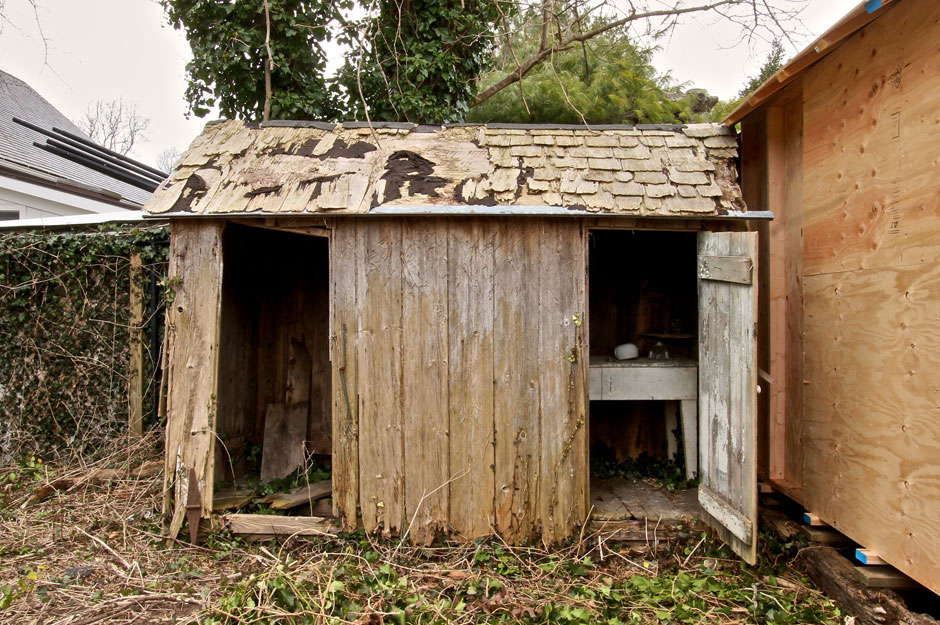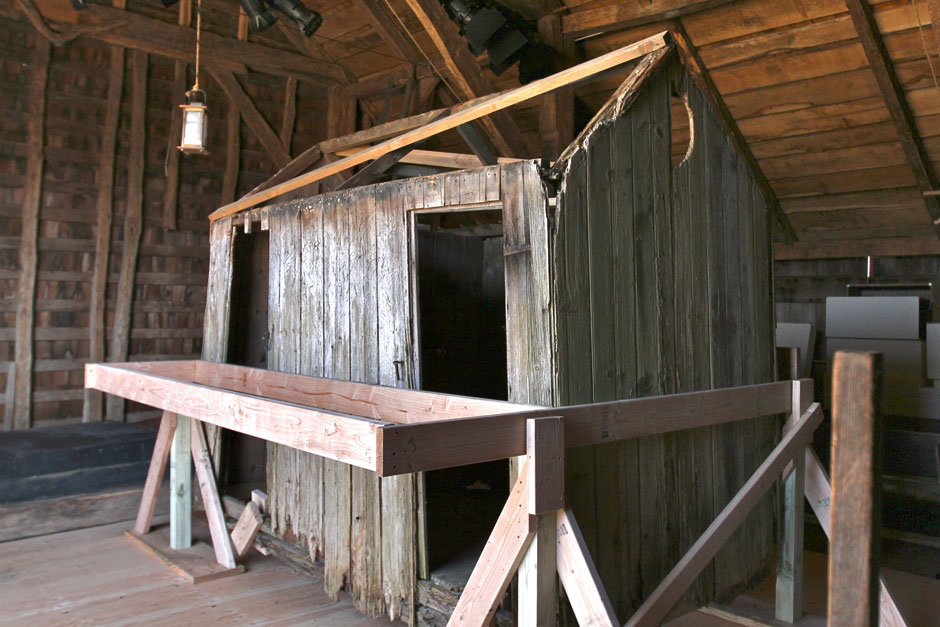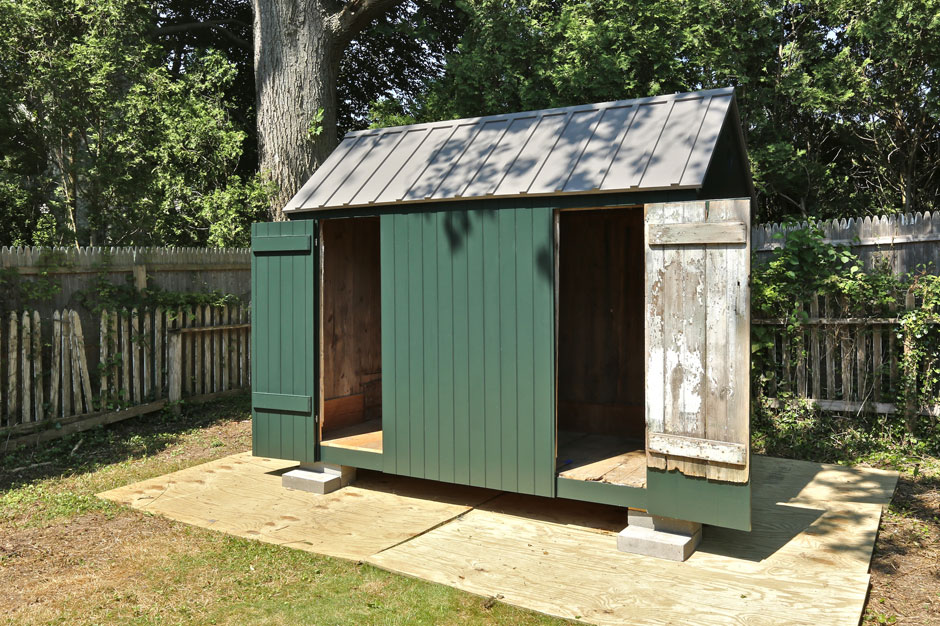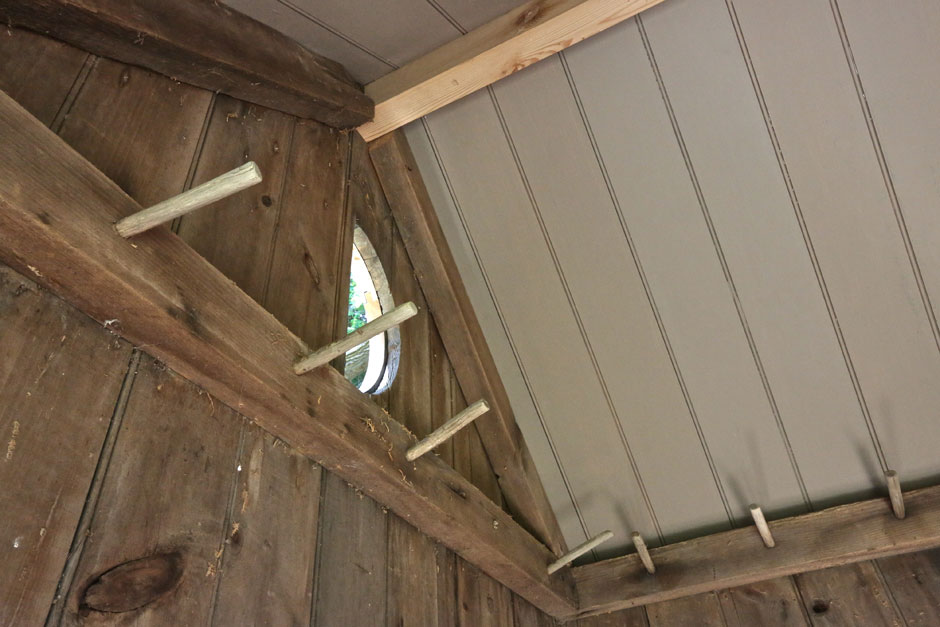
Thomas Moran carted this bath house to East Hampton’s Main Beach each summer and brought it back to his home on Main Street each fall for winter storage. In the 1880s and 1890s women wore their regular dresses on the beach and men even wore jackets and ties when they were relaxing under a shade structure or walking or sitting on the sand. When it was time for a swim they changed into bathing attire in their bath house. Then right after swimming it was back to the bathhouse to immediately return to their regular street outfit.
The cluster of bath houses at Main Beach during the 1880s is documented by paintings of the era including the c. 1875-1880 painting Beach at East Hampton by John Ferguson and the painting East Hampton Beach, 1881 by Edward Lamson Henry (see Ronald G. Pisano, Long Island Landscape Painting, 1820-1920, (New York: Little, Brown and Co., 1985),pages 57 and 61). Thomas Moran, Mary Nimmo Moran and their three children used the bath house to change into their beach attire. The bath house is not only valuable as a tangible piece of the Moran family’s summer recreation, it is also the only known intact East Hampton bath house remaining of that early period.

The Thomas Moran Trust engaged John Hummel & Associates to restore the bath house this year. Here the little building has been moved to the Mulford Farm barn, where work could proceed inside. The East Hampton Historical Society offered the use of the barn and the Village of East Hampton, which holds an easement on the Thomas Moran Studio property, provided guidance from their Director of Historic Services, Robert Hefner.
The Moran bath house is very lightly built. There is no wall frame, the structure is provided by the beaded pine siding. These original boards were so rotted at the bottom that they could no longer support the roof.

In order to preserve these boards and the original bath house interior, the approach was to install a new outer layer of beaded boards to provide structural stability and a water-tight exterior. Investigation revealed that the bath house originally had a simple board roof, which was reconstructed.
The restored bath house was returned to the Thomas Moran property. From the outside the bath house looks new, as it was when Thomas Moran’s family used it, including the shade of green paint.
The success of any restoration project depends on the skill and care of the people doing the work. John Hummel & Associates, and in particular Adam Galecki, who had responsibility for the project, strove to preserve every inch of original material while making sure there was enough structural integrity to keep the building standing for another 100 years.

By applying a skin of new boards to the exterior, the original interior could be preserved. Seen in this photograph is the beaded pine siding, with the patina of 130 years, and some of the 28 wood pegs set around the perimeter for hanging clothes. Also seen is a new pine ridge and the painted soffit of the new board-and-batten roof.
Captions by Robert Hefner. Photos © Jeff Heatley.
_____________________________________________________________
